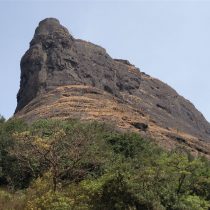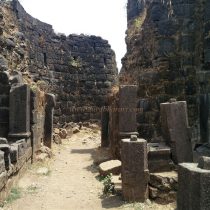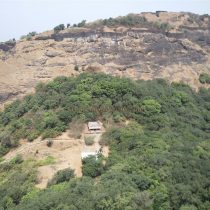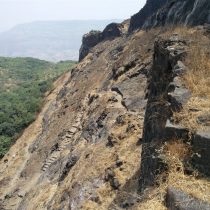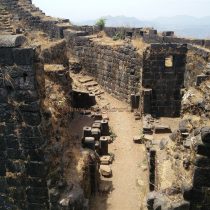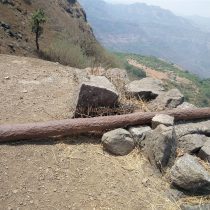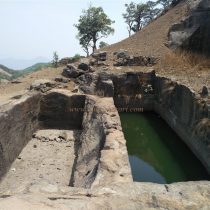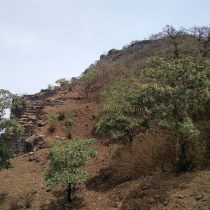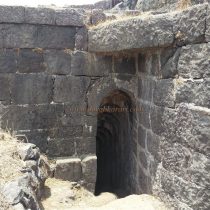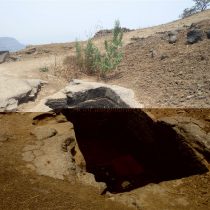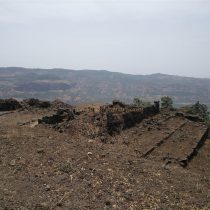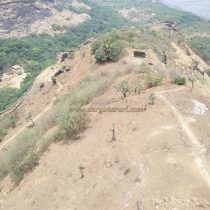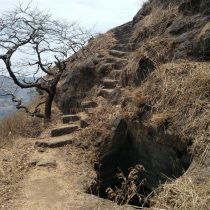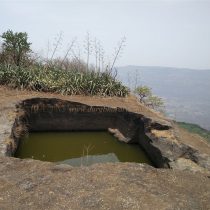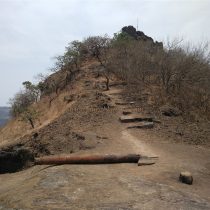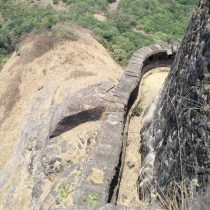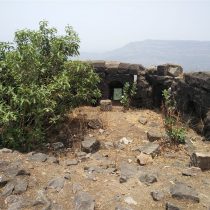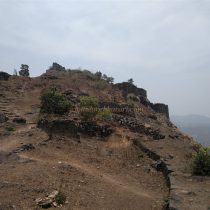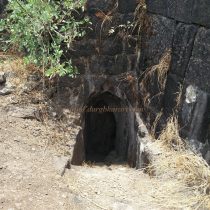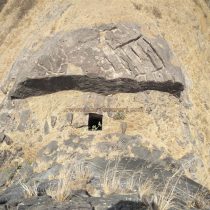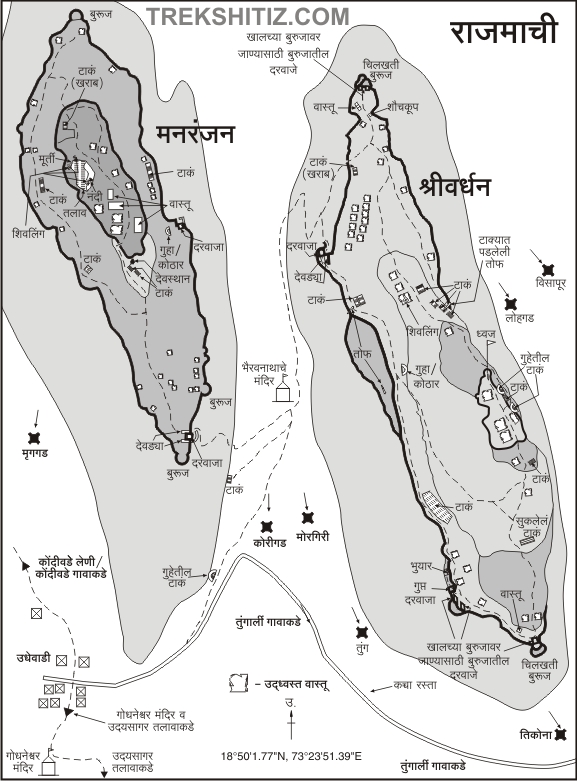SHRIWARDHAN
TYPE : HILL FORT
DISTRICT : PUNE
HEIGHT : 2660 FEET
GRADE : MEDIUM
The first thing that a trekker should note is that Rajmachi is one single fort and Manaranjan and Shrivardhan are two citadels on the Machi of Rajmachi fort. Rajmachi is the only fort in Maharashtra with two citadels on it. These two citadels are two separate forts. The area of this fort is huge and also the remains present here are on a large scale. I have divided the Rajmachi fort into three parts so it becomes easy for you to find what you are looking for. The first part is of the Machi which is known as Rajmachi. The second part is Shrivardhan citadel and the third part is Manranjan. In this article, I am going to introduce Shrivardhan citadel out of these three. The area formed by the mountain range from Lonavla to Khandala of Sahyadri is known as Ulhas river valley.
...
Rajmachi Fort is located at a distance of 15 km northwest of Lonavla on the Mumbai-Pune railway line in the source region of the Ulhas river. The fort has been situated on the ancient wharves since the Satvahan period and is surrounded by forests and greenery. Nature here fascinates the mind. The height of Rajmachi fort from sea level is about 2800 feet. We can visit Shrivardhan Fort in two ways. The first way is to come to Kondivate from Karjat by bus or rickshaw. The footpath from Kondivate to the fort via Kharwandi is difficult. It takes about 3 hours to reach Udhewadi by this route. The second way is to reach Udhewadi village from Lonavla via Tuganarli. This road is 15 km long. It takes 5 hours to reach the fort by this route. On the Pune-Mumbai highway from Lonavla to Khopoli, there is Rajmachi point in Khandala Ghat. From here, when you look at the front, you can see the two peaks adjacent to each other, i.e. the fort of Rajmachi. The deep valley to the east and south of Rajmachi is known as 'Kataldara'. The river Ulhas originates from this valley. The hill to the west of this river is called ‘Bhairobacha Dongar’. There is a temple of Bhairavnath on a sloping edge between Shrivardhan and Manaranjan citadels. In front of the temple, there are 3 Deepmal’s and an idol of Lakshmi. From here, the road on the left leads to Manaranjan and the road on the right leads to Shrivardhan citadel. Shrivardhan is taller than Manaranjan and the way to this fort is easy. To reach this, a path of steps is carved in the rock. In about half an hour we reach the west gate of Shrivardhan fort. In the distance, on the left side, there is a bastion of the fort. As the ramparts have collapsed in between, you can go there directly from here but if you want to see the structure of the main gate and the architecture of the fort, you should go through the main gate. In the ‘Adnyapatra’ of Ramchandrapant Amatya, in the 8th chapter, it is written on the structure of the forts. According to this scripture, the gate of the fort is hidden behind the bastion. As soon as you enter through the entrance of Gomukhi style, there are guard porches on both sides of the door. The total construction is one story high and this is understood by looking at the height of the interior construction and the patches in the wall to place the base of the 1st floor. The porch was formerly multi-storied, with spacious rooms and pillars. But now the roof of this structure has completely collapsed. At least its vertical walls and pillars that remain need to be taken care of or else they might collapse. There is a small door leading directly to the ramparts from the first floor of the collapsed porch on the right. The strong ramparts of the fort can be seen from afar distance. Going through this gate to the fort, you can see some cisterns carved in the rock on the left-hand side. There is an iron pillar next to these cisterns. The exact purpose of this approximately 8 feet long iron pillar is not yet known. There is a similar pillar at Raigad next to the Hatti Talao. Proper preservation and research of such items on forts should be carried out. This path leads from the cistern to a cave. This cave turned into granaries in the middle ages. Ganeshpatti and lotus are carved on the doors of this cave. With a small entrance, the cave is huge from the inside. There are 3 main parts of this cave, one on the right, one on the left, and one in the middle. The stock of the grains, weapons, and other supplies was collected and stored here. This path leads to the top of the Shrivardhan fort. On the way, there are remains of some more ruined houses, extinguished cisterns, a small temple of Vishnu without a roof, and the administrative office of the fort. Passing through all these, we come to the highest watchtower of the fort. A new flagpole has now been erected on this bastion. From this bastion, one can see the entire Rajmachi area and the Manranjan fort. In front is the breathtaking pinnacle of Dhak Bahiri and the lake of Shirota. The north side of Shrivardhan is like a Machi of this citadel. The bastions on this Machi are protected by double ramparts. Underground stairs are constructed in two places to come and go from these two ramparts. Such bastions are called ‘Chilkhati Buruj’. On the way there is a pond and next to it is a six-foot-long cannon that has recently been recovered which had sunk in this pond. Apart from this, two more cannons can be seen at two places on the ramparts. There is a construction that goes up from here. There are barrages all over the ramparts although the soil coming along with the rainwater has eroded them as well as the curtain wall. Water cisterns have been carved at various places on the fort. The sloping ramparts of the Shrivardhan fort on the sloping hill look very beautiful from Manranjan fort. The fort has a long history. Nalasopara is one of the largest trading ports in ancient times. The route from this port to Pune via Borghat is an ancient trade route. Borghat is like Naneghat, so there was a lot of transportation on this route. The forts built in the Konkan and Ghats were used to control this trade route. One of these forts is Rajmachi. If we consider the geography of the fort, we can see that Tung, Tikona, Lohgad, Visapur in Pawanmaval on one side of Rajmachi and Peth, Bhimashankar, Dhak fort, Gorakhgad, Siddhagad and Chanderi on the other side. Therefore, this fort should have been a major military base. There is a Buddhist cave on the western slope of the fort. This is called 'Kondhane Caves'. These caves are at a distance of 2 km from Kondhane village in Karjat taluka of Raigad district. These caves were carved in the second century BC, the beginning of the Satavahana period. It is a masterpiece of architecture carved in solid stone. This group of caves includes a Chaityagriha and seven rooms. These caves were built under Rajmachi. This period is probably of Satvahans i.e. two thousand years ago. The fort has witnessed the reigns of Satvahan, Chalukya, Rashtrakut, Yadav, Kadamba, Bahmani, Adilshahi, Shivshahi, and Peshwa. Rajmachi fort was called the gate of Konkan. In the same year after the invasion of Kalyan in 1657, Shivaji Maharaj annexed the forts of Rajmachi, Lohgad, Tung, Tikona, and Visapur on Pune and Borghat into Swarajya. This established the dominance of Shivshahi over the entire region from Pune to Thane. All these forts were under the control of Marathas till Sambhaji Maharaj. As soon as the Aurangzeb came to Sahyadri, in 1704 AD, Aurangzeb's general conquered the fort, but after Aurangzeb's turned back the Marathas attacked and recaptured the fort of Rajmachi. After this, in 1713, Shahu Maharaj gave this fort to Kanhoji Angre. In the year 1730, this fort came under the control of the first Bajirao Peshwa. In 1776, Sadashivrao Bhau's duplicate conquered the entire Konkan region and reached Borghat. He conquered the fort of Rajmachi. After this, his dominance increased but the Peshwa suddenly attacked him and took control of the fort of Rajmachi and the surrounding area. Later in 1818, the fort was passed to the British. It takes at least two days to visit the fort. Udhewadi village at the foot of the fort has excellent accommodation and food facilities.
© Suresh Nimbalkar

